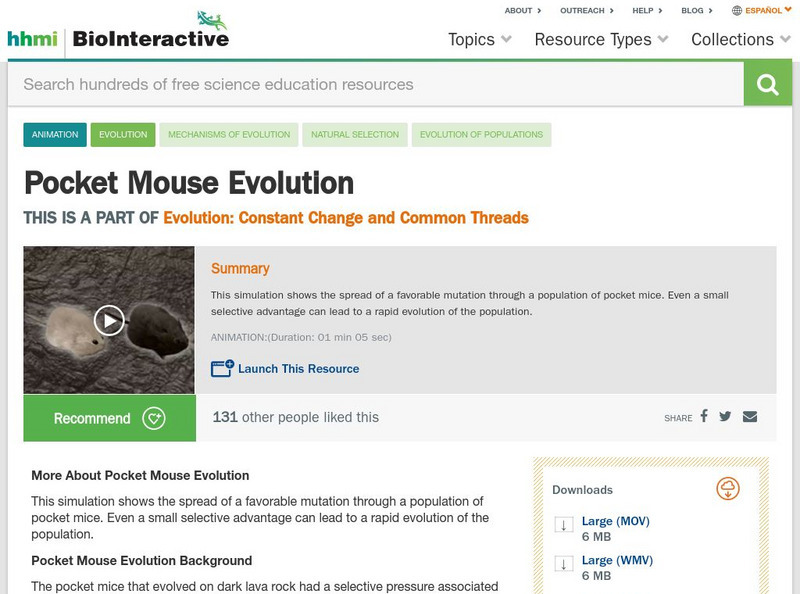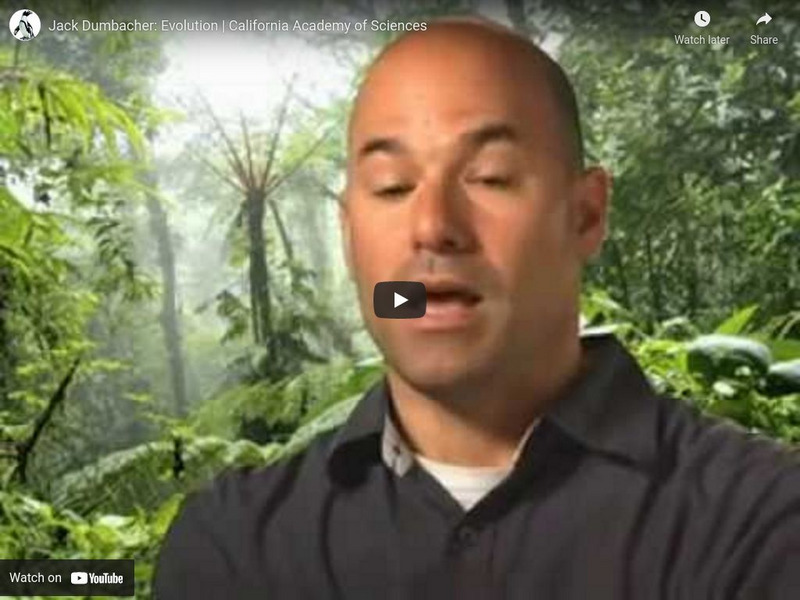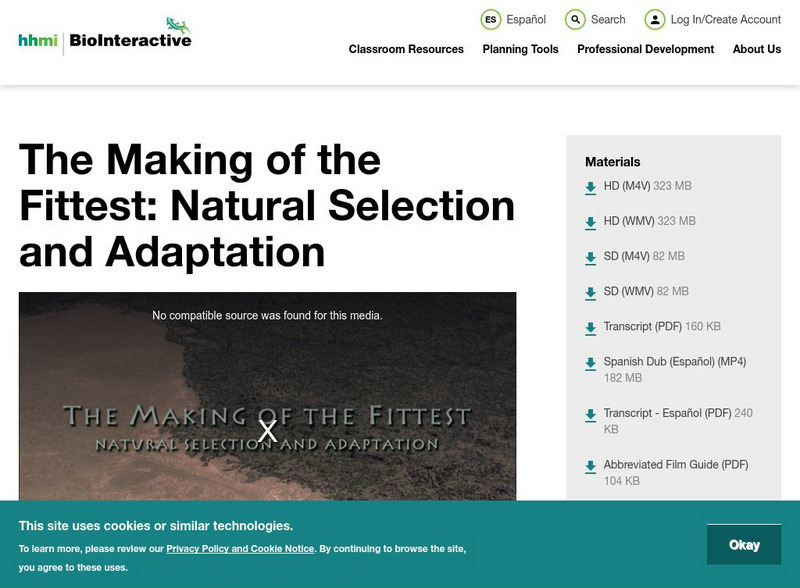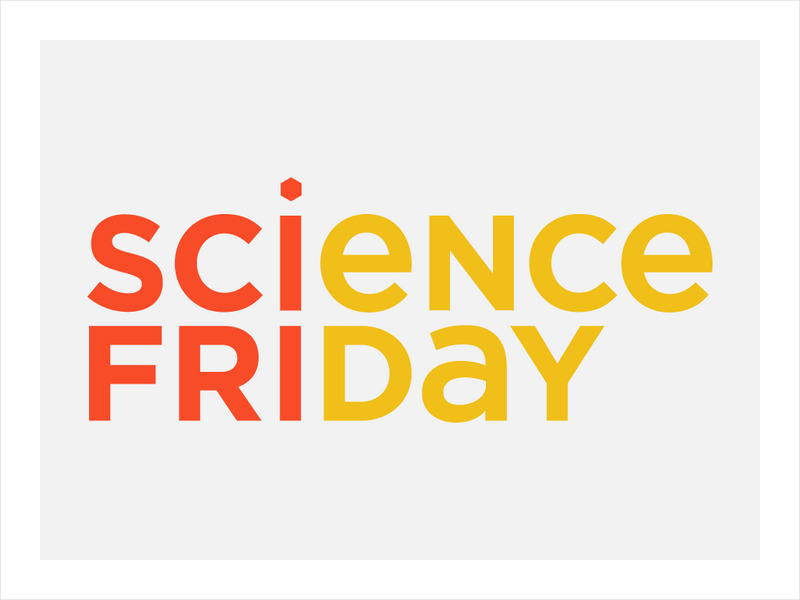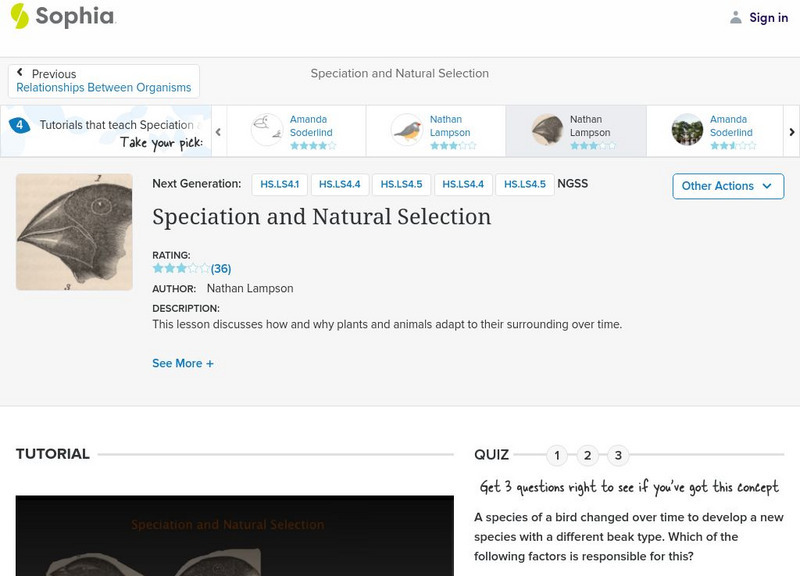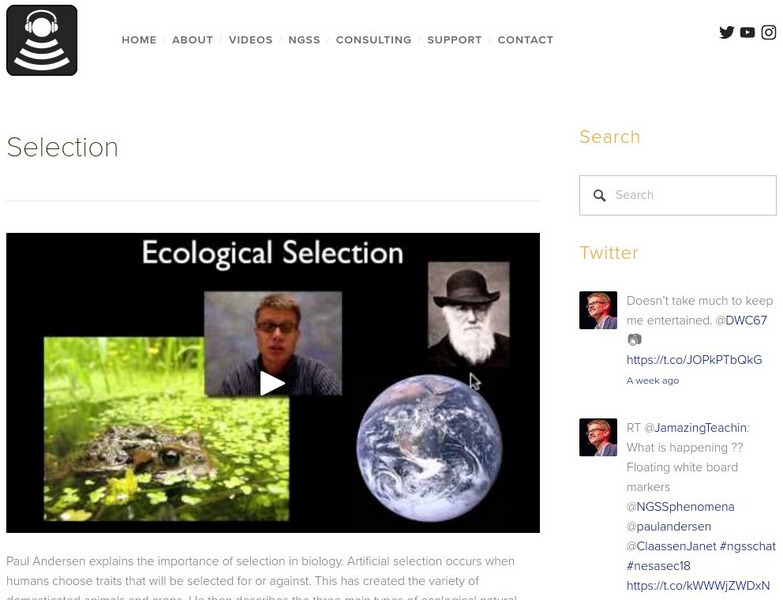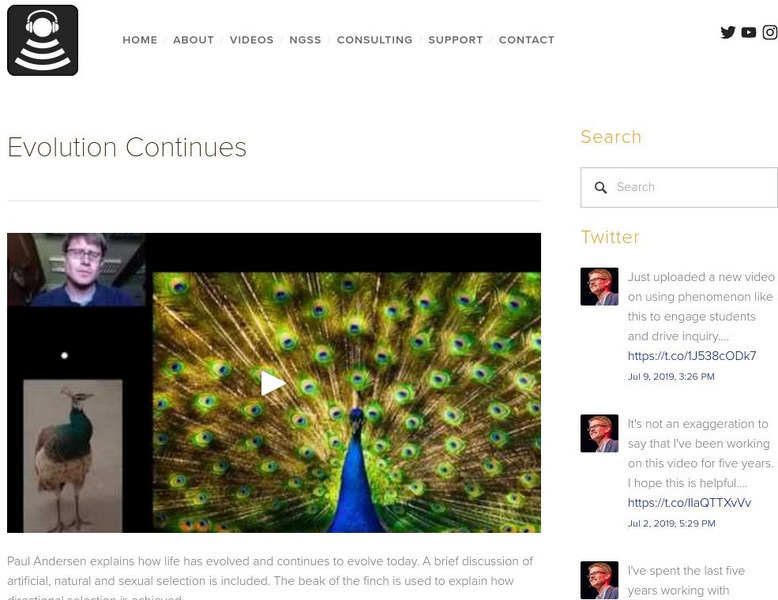Howard Hughes Medical Institute
Hhmi: Bio Interactive: Wing Morph
Through video clips, demonstrations, and inquiry learn how the wing morph functions in the process of evolution. [0:29]
Howard Hughes Medical Institute
Hhmi: Bio Interactive: Pocket Mouse Evolution
This simulation shows the spread of a favorable mutation through a population of pocket mice. Even a small selective advantage can lead to a rapid evolution of the population. [1:05]
Howard Hughes Medical Institute
Hhmi: Biointeractive: The Biology of Skin Color
Penn State University anthropologist Dr. Nina Jablonski walks us through the evidence that the different shades of skin color among human populations arose as adaptations to the intensity of ultraviolet radiation in different parts of...
California Academy of Sciences
Ca Academy of Sciences: Science Heroes: Jack Dumbacher, Elegance of Evolution
See evolutionary biologist Jack Dumbacher explain how mathematical models can reconstruct the evolution of organisms. [1:38]
Crash Course
Crash Course History of Science #22: Darwin and Natural Selection
Darwin and Wallace are at the heart of understanding evolution and natural selection. Watch as Hank talks about their wonderful (if not seasick-inducing) trips around the world and how theories of evolution "evolved" through history....
Howard Hughes Medical Institute
Hhmi: Bio Interactive: Pocket Mouse and Predation
Students watch a short animation showing how the pocket mouse adapts and evolves in a changing environment. Includes discussion questions. [0:20]
PBS
Pbs Learning Media: Good Thinking!: Natural Selection: Common Misconceptions
This video addresses the topic of natural selection and misconceptions students may have that would lead to them not understanding the topic of evolution. [10:07]
Howard Hughes Medical Institute
Hhmi: Bio Interactive: Natural Selection Adaptation
Classroom resources paired with a ten-minute video highlight the groundbreaking research of physical and genetic evolutionary changes in rock pocket mouse populations. [10:31]
Khan Academy
Khan Academy: Biodiversity and Extinction, Then and Now
How common is species extinction? Some is always happening. But over geologic time, biodiversity has increased despite several mass extinction events. Humans are now driving a mass extinction of biodiversity. [12:21]
Khan Academy
Khan Academy: Biodiversity and Natural Selection
Patterns and processes of evolution. How evolution and natural selection are reflected in the similarities and differences of organisms. [9:02]
Khan Academy
Khan Academy: Evolution: Biodiversity and Natural Selection
Patterns and processes of evolution. How evolution and natural selection are reflected in the similarities and differences of organisms. [9:03]
Khan Academy
Khan Academy: Evolution: Natural Selection and the Owl Butterfly
How the "Owl Butterfly" may have gotten the spot on its wings. [13:29]
Khan Academy
Khan Academy: Evolution: Fossils: Introduction to Evolution Natural Selection
Introduction to how groups of organisms evolve and how natural selection can lead to evolution. [17:39]
PBS
Pbs Learning Media: Different Breeds of Cattle
In this video segment from Nature, learn about six different breeds of cattle. [6:46]
Science Friday Initiative
Science Friday: The Story of Texas Longhorns, as Told by Their Dna
Centuries of natural selection left longhorn cattle less susceptible to drought and disease.
Sophia Learning
Sophia: Natural Selection: Lesson 3
This lesson will introduce the process of natural selection. It is 3 of 5 in the series titled "Natural Selection."
Sophia Learning
Sophia: Speciation and Natural Selection: Lesson 2
This lesson discusses how and why plants and animals adapt to their surroundings over time. It is 2 of 4 in the series titled "Speciation and Natural Selection."
Bozeman Science
Bozeman Science: Behavior and Natural Selection
Paul Andersen explains how the behavior of various organisms is shaped by natural selection. The action of phototropism and the timing of photoperiodism have both been shaped by the relative availability of light. Courtship in the bower...
Bozeman Science
Bozeman Science: Social Interactions & Group Behavior
In this video, Paul Andersen explains the importance of social interactions and group behavior. Organisms live in groups because it overs them greater success and has been selected for through natural selection. Some groups are stable...
Bozeman Science
Bozeman Science: Microevolution
Paul Andersen defines microevolution as any change in the frequency of the allele pool. He then explains the five mechanisms of evolution; small sample size, non-random mating, mutations, gene flow and natural selection.
Bozeman Science
Bozeman Science: Selection
Paul Andersen explains the importance of selection in biology. Artificial selection occurs when humans choose traits that will be selected for or against. This has created the variety of domesticated animals and crops. He then describes...
Bozeman Science
Bozeman Science: Evolution Continues
Paul Andersen explains how life has evolved and continues to evolve today. A brief discussion of artificial, natural and sexual selection is included. The beak of the finch is used to explain how directional selection is achieved.
Bozeman Science
Bozeman Science: Ap Natural Selection Review
Paul Andersen reviews the major within the first unit on natural selection. He starts by defining evolution and explaining how evolution can occur in a population. He reviews the population genetics and camouflage lab. [13:04]

